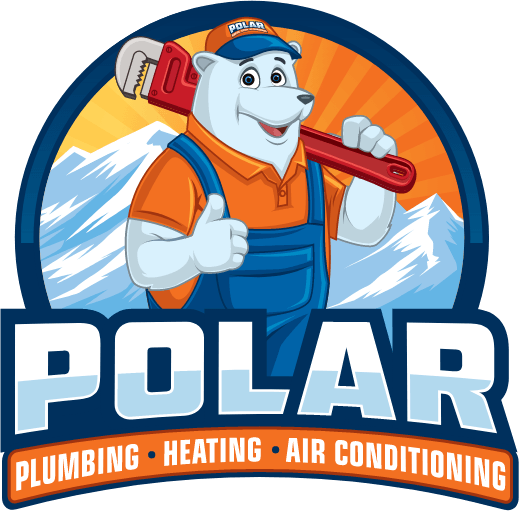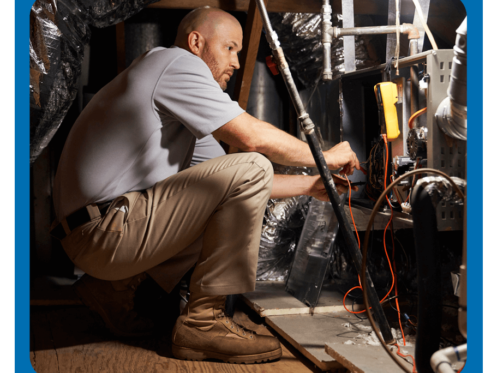1. Malfunctioning Thermostat
One common furnace problem that most homeowners experience is a faulty thermostat. This device determines your house heating needs and signals the furnace to kick start or turn off. A malfunctioning thermostat can cause your furnace to produce more or less heat than required. Begin by checking whether the thermostat is set to the heat position, at least five degrees above the room temperature. If this fails to resolve the issue, change the thermostat batteries. Also, open the thermostat and clear off debris. Call a professional to troubleshoot and fix the problem if your thermostat still doesn’t work.
2. The Furnace Fails to Blow Warm Air
Sometimes, you might turn on the furnace, but it fails to distribute warm air throughout the house. A clogged blower can cause this problem, so start by clearing off any debris. If your thermostat is on the fan setting, the furnace will not blow warm air, so adjust this. Other times your furnace may fail to blow in warm air due to a tripped circuit breaker or a blown fuse. If you are experienced in handling electrical components, you can flip back the circuit breaker to reset the furnace. Call a professional immediately if this fails to work since the issue could be due to a problem with the electrical wiring.
3. Dirty Air Filters
A furnace filter traps dirt particles, pet dander, pollen, and other contaminants from the indoor air. When neglected, such pollutants can clog the air filters limiting airflow. The furnace will thus have to work harder to maintain the desired indoor temperature, which strains vital components and results in high energy consumption. To avoid such issues, clean or change the air filters after every three months. But if you have a heavily shedding pet or change the filters monthly.
4. Electrical Ignition or Pilot Light Problems
Older furnaces are more likely to experience pilot light or ignition problems that affect the furnace’s ability to heat the house adequately. Dirt accumulation in the heating system can cause the pilot light to go off. When this happens, the fuel won’t get ignited, so the furnace fails to produce heat. Modern furnaces have an electric ignition system. And in case of a defect, the furnace won’t produce warm air. Call a technician immediately you notice a weak, flickering, or colored pilot light. Yellow flames signify an excessive accumulation of carbon monoxide in your system that can be hazardous, so seek professional help.
5. Frequent Cycling
Another problem you can experience with your furnace is frequent cycles. Your unit turns off even before the house attains the required temperature. The main cause of short cycles is restricted airflow. Walk throughout the house and clear off any obstructions near the vents that may prevent heat flow. Also, inspect the air filter for clogs and check the thermostat setting as well. Note that the frequent cycles can cause the furnace to overheat. However, most models have safety features that shut down the system once the temperature gets too high. The regular cycles also result in increased utility bills, so have the problem fixed as soon as possible.
6. The Furnace Fails to Heat the House Adequately
Your furnace might turn on but fail to produce enough heat to warm all the rooms. You will then begin to notice that some spaces within your house appear relatively colder than others. Wrong size furnace is one main cause of this issue. If you install an undersized furnace, it will struggle to produce enough warm air for the entire house. As a result, you might need to run the unit for a longer period which only strains the components, and the system will quickly wear down.
On the other hand, an oversized furnace will put out too much heat then shut down quickly. The short running time results in uneven heating. Consult a professional HVAC technician to help you choose the right furnace size depending on the square footage of your house, the climatic zone in your home, and the number of dwellers.
Consult a professional HVAC technician today
7. Loud and Unusual Noises
Once you start noticing some weird sounds coming from your furnace, it means that some parts are failing and they need attention. If your unit produces banging or popping sounds, the burner struggles to reach the desired temperature to combust the fuel. When the furnace turns off, the ductwork can produce banging sounds as it expands and contracts due to temperature changes. On the other hand, a humming or buzzing noise means loose components. A loud squealing noise as the furnace starts indicate worn-out belts, faulty motor shaft, or bearings. Rattling or rambling noises signify loose ductwork, debris, or a broken fan blade. If your furnace produces persistent vibrating sound, it indicates clogged air filters. Call an experienced technician to assess the issue and advice on the best cause of action.
8. Cracked Heat Exchanger
A cracked heat exchanger affects your furnace’s ability to function optimally. It also allows carbon monoxide to accumulate in your house. The heat exchanger is more likely to crack if you overheat your home or neglect your air filters. Some common signs of cracked heat exchangers include strong unpleasant odors and soot around the furnace. Unfortunately, this problem requires that you replace the heat exchanger.
9. Leaking Water
High efficient furnaces collect vapor from the combustion gases in the heat exchanger and produce condensation. Such furnaces may develop leak problems, and you will begin to notice water pooling below the system. Leaks mainly happen due to a clogged condensation line. Also, if you have a whole-house dehumidifier connected to the furnace, it can cause water leaks if breakage occurs. Call an experienced technician to diagnose the cause of the problem and fix it.
Are You Having Issues With Your Furnace? Seek Professional Assistance
Although furnaces have a longer lifespan, they don’t last forever. After some time, they begin to develop natural wear and tear, which can result in a frustrating mechanical breakdown. By knowing the most common problems with furnaces, you will have a better understanding of your unit. You can easily spot malfunctioning signs and seek professional help on time. Having your furnace inspected regularly can help avoid most of the above problems. During servicing, the technician can detect a minor issue and fix it before it becomes a bigger problem.

